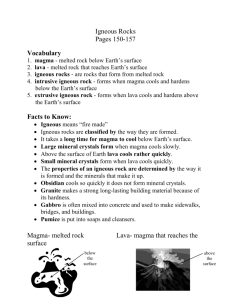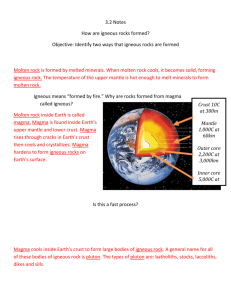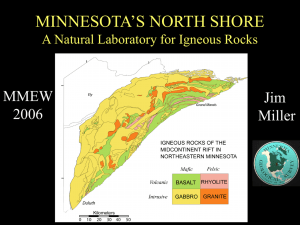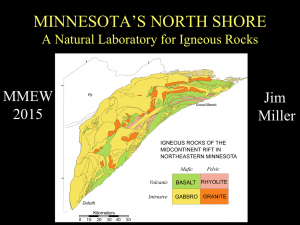Geology 101 Homework 4
advertisement
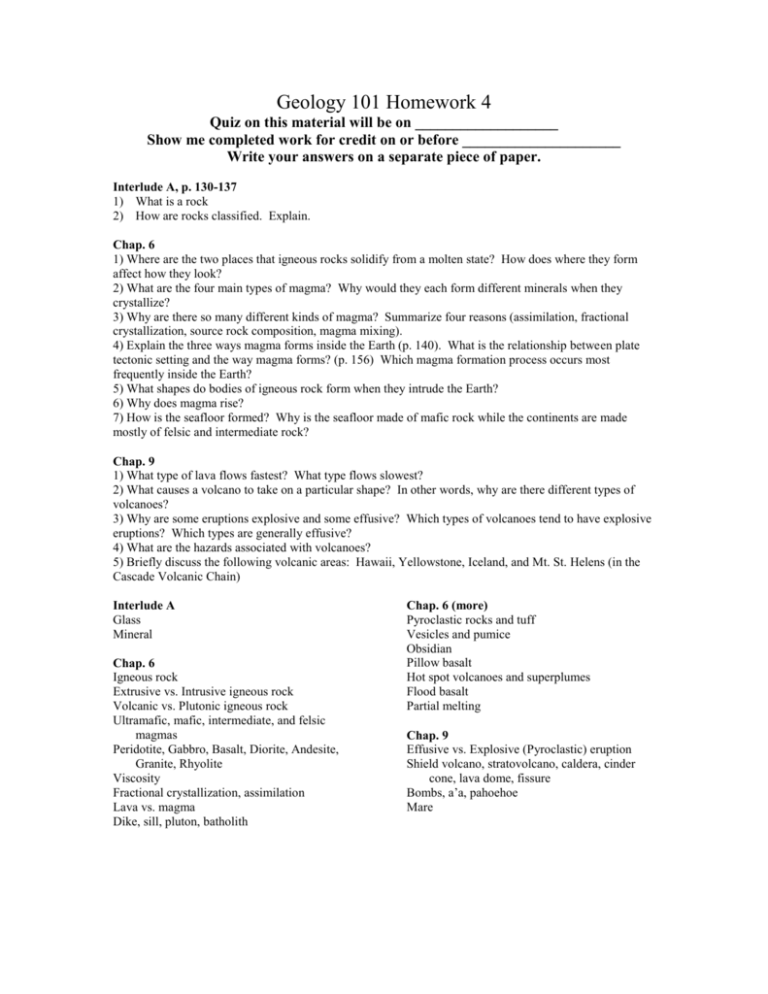
Geology 101 Homework 4 Quiz on this material will be on ___________________ Show me completed work for credit on or before _____________________ Write your answers on a separate piece of paper. Interlude A, p. 130-137 1) What is a rock 2) How are rocks classified. Explain. Chap. 6 1) Where are the two places that igneous rocks solidify from a molten state? How does where they form affect how they look? 2) What are the four main types of magma? Why would they each form different minerals when they crystallize? 3) Why are there so many different kinds of magma? Summarize four reasons (assimilation, fractional crystallization, source rock composition, magma mixing). 4) Explain the three ways magma forms inside the Earth (p. 140). What is the relationship between plate tectonic setting and the way magma forms? (p. 156) Which magma formation process occurs most frequently inside the Earth? 5) What shapes do bodies of igneous rock form when they intrude the Earth? 6) Why does magma rise? 7) How is the seafloor formed? Why is the seafloor made of mafic rock while the continents are made mostly of felsic and intermediate rock? Chap. 9 1) What type of lava flows fastest? What type flows slowest? 2) What causes a volcano to take on a particular shape? In other words, why are there different types of volcanoes? 3) Why are some eruptions explosive and some effusive? Which types of volcanoes tend to have explosive eruptions? Which types are generally effusive? 4) What are the hazards associated with volcanoes? 5) Briefly discuss the following volcanic areas: Hawaii, Yellowstone, Iceland, and Mt. St. Helens (in the Cascade Volcanic Chain) Interlude A Glass Mineral Chap. 6 Igneous rock Extrusive vs. Intrusive igneous rock Volcanic vs. Plutonic igneous rock Ultramafic, mafic, intermediate, and felsic magmas Peridotite, Gabbro, Basalt, Diorite, Andesite, Granite, Rhyolite Viscosity Fractional crystallization, assimilation Lava vs. magma Dike, sill, pluton, batholith Chap. 6 (more) Pyroclastic rocks and tuff Vesicles and pumice Obsidian Pillow basalt Hot spot volcanoes and superplumes Flood basalt Partial melting Chap. 9 Effusive vs. Explosive (Pyroclastic) eruption Shield volcano, stratovolcano, caldera, cinder cone, lava dome, fissure Bombs, a’a, pahoehoe Mare

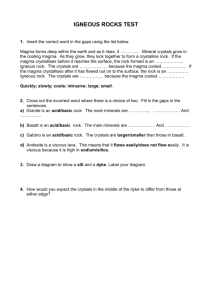


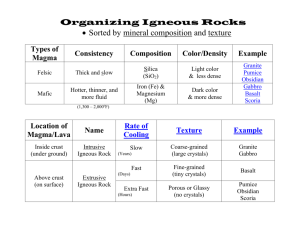

![MULTIPLE CHOICE [1 point each]](http://s3.studylib.net/store/data/007665914_2-53fdb5abcde5d4f4017c3aa52e17df22-300x300.png)

